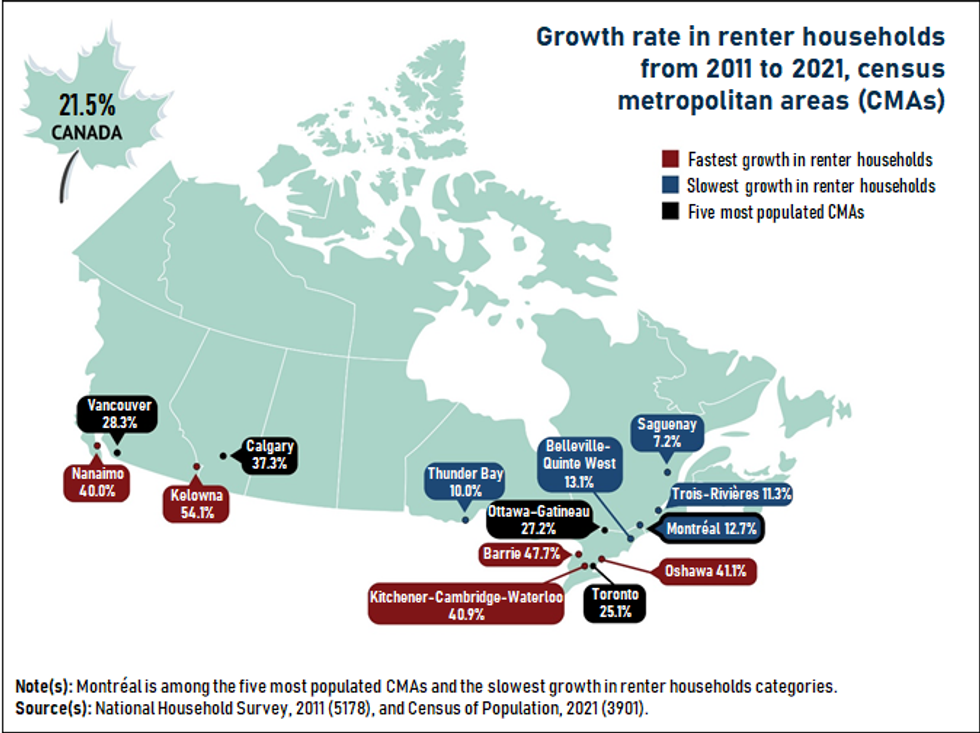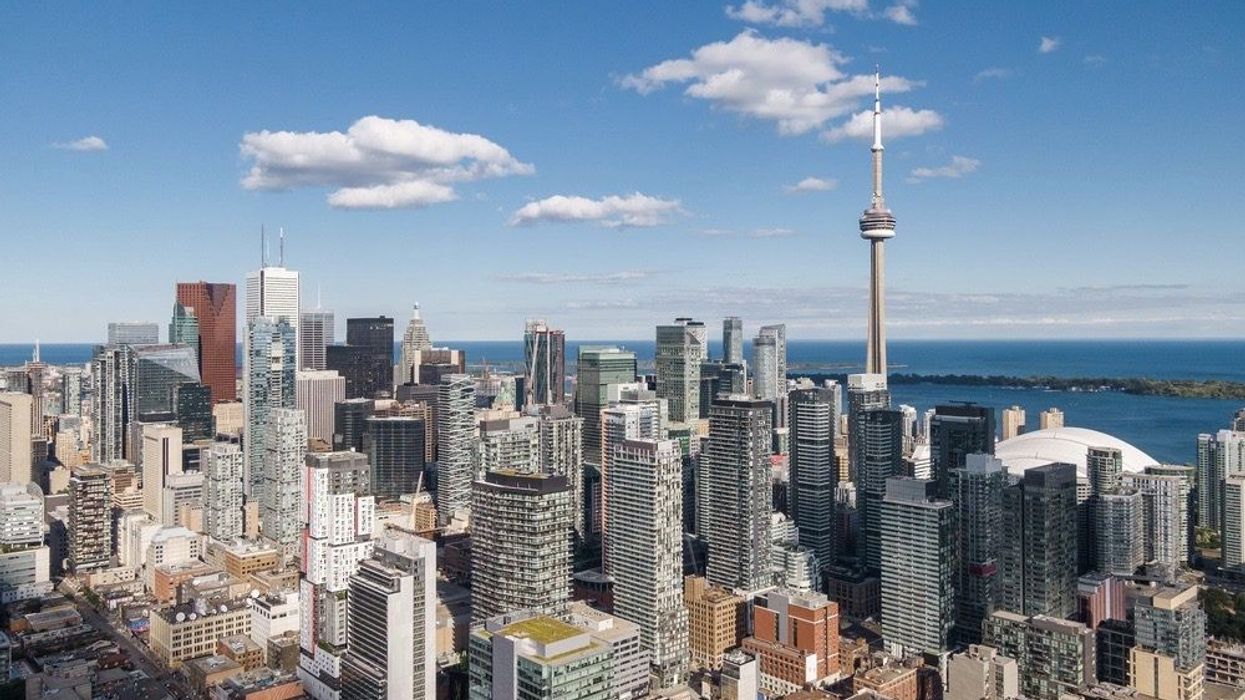There's a significant shift happening in Canada -- and it's between the renter population and the homeowner population.
While the amount of homeowners in Canada is growing at 8.4%, the renter population is growing at 21.5%, more than double the rate, according to Statistics Canada data that was published this week.
After hitting a peak of 69.0% in 2011, the overall proportion of Canadians who own a home was 66.5% in 2021, which ranks 23rd among Organization for Economic Co-operation and Development (OECD) countries. For comparison, the rate of homeownership was 65.5% in the United States, 67.3% in the United Kingdom, and 69.6% in Mexico. The average among OECD countries was 71.5%, which takes into account households that own their home outright and households that own their home with a mortgage.
The provinces that saw the biggest declines in homeownership from 2011 and 2021 were Nova Scotia (from 70.8% to 66.8%) and Prince Edward Island (from 73.4% to 68.8%). Homeownership rates declined in some of Canada's most populous provinces as well, however, with British Columbia seeing the third-largest decline (from 70.0% to 66.8%) and Ontario seeing the fourth-largest decline (from 71.4% to 68.4%).
READ: Homeownership Plays Big Role in How Canadians Perceive Wealth: Poll
While the population of homeowners increased by 8.4% between 2011 and 2021 (but not the overall proportion), that same number increased by 23.7% from 1996 to 2006, indicating that while we're still seeing increased amounts of homeowners, the momentum is now going the other way. And, as is usually the case, when homeownership goes down, rental rates go up, and the Statistics Canada data shows that is exactly what is happening.
Approximately 33.1% of Canadians -- 5 million -- were renters in 2021, but what's particularly noteworthy is both of these numbers -- a 33.1% rental rate and 66.5% homeownership rate -- are trending in opposite directions, regardless of where in Canada you look.
"The growth in renter households outpaced the growth in homeowner households from 2011 to 2021 in each of Canada's 41 large urban centres," Statistics Canada says. "In 30 CMAs [Census Metropolitan Area], the growth of renter households was more than double the growth of owner households over this period."
The five CMAs in the Canada that saw the highest renter population growth rate between 2011 and 2021 came exclusively from two provinces: British Columbia and Ontario, which likely surprises few. Those CMA's were Kelowna (+54.1%) and Nanaimo (+40.0%) in BC and Barrie (+47.7%), Oshawa (+41.1%), and Kitchener–Cambridge–Waterloo (+40.9%) in Ontario.

Affordable Housing
Statistics Canada notes that the decline in homeownership rate -- and growth in rental rate -- reflect the increased supply of multi-family buildings, citing their own statistics about how housing in Canada changed between 1957 and 2014. Those statistics show that before 2011, multi-family buildings accounted for less than 40% of building permits. In 2021, however, that number had risen to 73.2%.
Furthermore, residential buildings with five or more storeys is the fastest growing building type in Canada, seeing an increase of 14.7% between 2016 and 2021 and accounting for 34.4% of dwellings across Canada, something that is very noticeable in British Columbia, where the City of Vancouver has policies geared at encouraging development of residential buildings between four and six storeys.
All of this is, of course, in response to housing supply shortages -- particularly well-publicized in BC and Ontario. Statistics Canada points out that according to the Canada Mortgage and Housing Corporation, the net number of purpose-built rental units added between 1990 and 2010 was 14,000, whereas between 2010 and 2020 the number of units added was approximately 400,000, bringing the total number of units in Canada to almost 2.2M.
READ: Feds’ Affordability Plan Includes $500 Top-Up For Low-Income Renters
This correlation is further supported by the fact that the more recent a dwelling was built, the more likely it is that the occupant is a renter. Approximately 40.4% of dwellings built between 2016 and 2021 -- five years old or less, as of 2021 -- were occupied by renters, which Statistics Canada says is a higher proportion than with dwellings of any other age.
What may be more surprising is that the rate of unaffordable housing is currently in decline. While newer schools of thought factor transportation in as well, the traditional definition of unaffordable housing is defined as housing that costs 30% of more of one's income. Based on that definition, the rate of unaffordable housing -- the proportion of households that spent over 30% of their income on housing -- dropped from 24.1% to 20.9% between 2016 and 2021.
Many provinces and CMA's were higher than 20.9%, however, and the names should come as no surprise. The province with the highest rates of unaffordable housing in 2021 was British Columbia, at 25.5%, while Ontario was second at 24.2%. In terms of cities, Vancouver had the second-highest at 29.8%, while the highest was Toronto, at 30.5%. The numbers certainly speak for themselves, but for those who live in those provinces, they certainly aren't saying anything we don't already know.


















